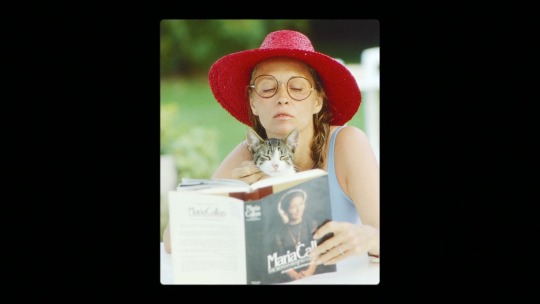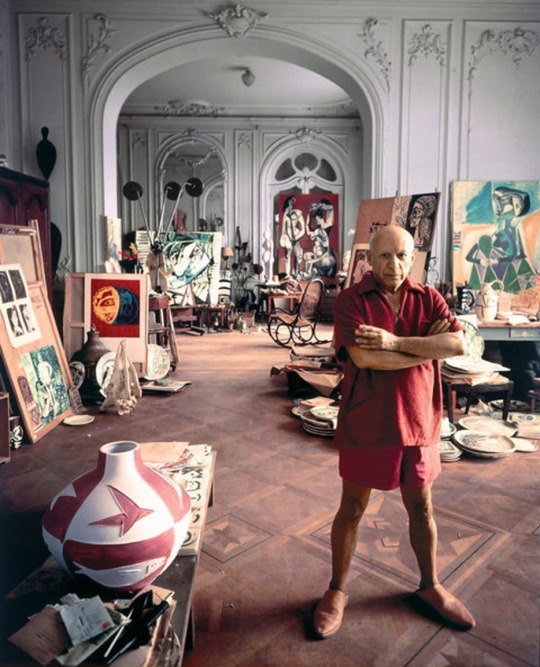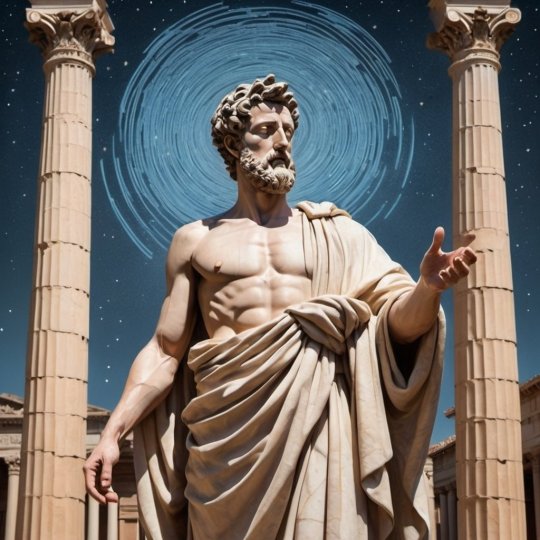#arianna huffington
Explore tagged Tumblr posts
Text
“Il primo passo per cambiare il mondo consiste nel cambiare la nostra visione di esso e la nostra presenza in esso.”
— Arianna Huffington
#cambiare#mondo#visione#vedere#modo di vedere#modo di vivere#presenza#frasi tumblr#frasi#frasi e citazioni#cambiamenti#arianna huffington
29 notes
·
View notes
Text

Faye (2024) by Laurent Bouzereau
Book title: Maria Callas, The Woman Behind the Legend (1981) by Arianna Stassinopoulos
#faye#faye dunaway#maria callas the woman behind the legend#books in movies#arianna huffington#arianna stassinopoulos#laurent bouzereau
7 notes
·
View notes
Text

Mythology: The Greek Pantheon - Artemis
Artemis is freedom - wild, untrammeled, aloof from all entanglements. She is a huntress, a dancer, the goddess of nature and wildness, a virgin physically and, even more important, a virgin psychologically, inviolable, belonging to no one, defined by no relationship, confined by no bond.
#artemis#goddess of the moon#goddess of the hunt#greek gods#greek goddess#ancient greek#greek mythology#Greek myth#greek myth aesthetic#greek myth moodboard#greek mythology aesthetic#Greek mythology moodboard#mythology aesthetic#mythology moodboard#moodboard#aesthetic#history aesthetic#History moodboard#greek myth art#arianna huffington
31 notes
·
View notes
Text
6 Tips to Boost Productivity for Business Leaders
Business leaders and successful entrepreneurs are renowned for their ability to achieve more in less time. They often seem naturally good at being productive and accomplishing their goals.
Besides discipline, what other measures can you take to boost productivity?
Some people hold themselves responsible by reading blogs and books for inspirational productivity quotes. Others log their work on productivity apps.
Regardless of your preferred motivation method, you will occasionally need productivity tips to move forward.
Let's explore some of the best tips to boost productivity for business leaders to help you on your entrepreneurial journey.
Read on.
The Importance of Productivity for Business Leaders
First, let's understand what productivity is and why it matters.
Being productive increases output and minimizes the time needed to complete a task. It involves striking a balance between the two to enhance performance.
Productivity is vital whether you're a beginner or an experienced entrepreneur.
Here's why it matters.
● Inspirational Leadership: As a business leader, maintaining high productivity sets a positive example for your team. It fosters a culture of high performance, which encourages your employees to adopt similar behaviors. Ultimately, this boosts your business' overall performance whether you’re managing a team or planning a corporate event.
● Informed Decision-Making: A productive leader can make informed decisions quickly. This keeps the business agile and reduces risks while exploiting opportunities.
● Efficient Goal Achievement: Your productivity will ensure the organization moves forward with purpose and direction. This will lead to sustained growth and long-lasting success.
Top 6 Tips to Boost Productivity for Business Leaders
Here are some productivity tips to help you accomplish things faster. If you’re looking for productivity tips for employees, then read this blog post by Attrock.
1. Prioritize & Delegate Tasks
Use a planner or a checklist, then prioritize your tasks based on urgency and importance.
This will help you focus on the most critical tasks and curb time wastage. You can aim for three priority tasks daily and not do anything else until you complete them.
This is especially beneficial for those who want to manage their time efficiently and increase productivity as a freelancer.
Being a productive leader also means recognizing when to delegate tasks and not do everything yourself.
Delegating tasks to people who are best suited for them helps boost productivity and tap into the specialized skills of your team members. It also frees your time and lets you concentrate on strategic initiatives and overall business growth.
Jeff Bezos, Amazon's founder, created a "two-pizza team" rule to ensure the appropriate delegation of tasks. The idea was to make small, autonomous teams that you could feed with two pizzas. The approach enabled the company to innovate rapidly and maintain high productivity across multiple projects.
Here's a video of Bezos explaining how the strategy impacted productivity and efficiency.
2. Leverage Technology & Automation
A productive business owner understands the value of leveraging technology. Using the right tools can help you optimize processes without sacrificing quality standards.
For example, you may use an ecommerce analytics software solution rather than manually following and analyzing the market. That means you can track your products' price and availability and monitor your competitors' promotional activities.
You may also need to learn to use a digital business card to improve your professional engagements and networking efficiency.
3. Encourage Transparent Communication
Effective communication is crucial for boosting productivity. So, ensure you create a work environment where transparent communication thrives.
A policy of openness and routine check-ins promotes the culture of sharing ideas and concerns. This helps prevent unforeseen circumstances by addressing issues before they escalate into significant concerns.
Besides helping address issues promptly, open communication fosters innovation and collaboration. It also saves time, minimizes misunderstandings, and keeps projects on track.
Satya Nadella, Microsoft's CEO, applies this strategy. He transformed the company's culture by encouraging transparent communication and a growth mindset.
In the following interview, Nadella speaks of encouraging employees to share feedback and ideas openly. This cultural shift resulted in enhanced innovation and collaboration.
Here's the interview.
4. Time Blocking
Time blocking is an effective productivity tactic embraced by many successful business leaders. It involves assigning specific blocks of time for different activities or tasks throughout your day.
You can reduce distractions and optimize your productivity by scheduling dedicated time slots for meetings, managing email, focusing on work, and engaging in personal activities. This technique helps prioritize tasks and manage time efficiently, ensuring that essential tasks receive the most attention.
Elon Musk applies this technique to manage his hectic schedule. He usually allocates five-minute slots to various tasks throughout the day. This strategy has significantly enhanced his productivity by enabling him to concentrate on one task at a time without interruptions.
Here's a video of Musk sharing how he applies time blocking to manage his time effectively.
5. Healthy Habits & Self-Care
Maintaining healthy habits and practicing self-care are crucial for sustaining high productivity levels. This includes regular exercise, a balanced diet, adequate sleep, and mindfulness practices.
These habits boost physical and mental health, improving focus, energy, and resilience. For example, you can include a morning workout, a nutritious breakfast, and meditation in your morning routine to start your day right.
The founder of the Huffington Post, Arianna Huffington, emphasizes the significance of sleep and self-care. She once collapsed from exhaustion, after which she changed her lifestyle and started prioritizing sleep. Besides improving her well-being, this shift boosted her creativity and productivity.
Here's a short talk of Arianna sharing the power of a good night's sleep. She highlights how this can enhance productivity, happiness, and more thoughtful decision-making.
6. Reflect & Evaluate
Regular self-reflection and evaluation help assess progress and identify areas for improvement. So set aside some time to review completed tasks, analyze outcomes, and adjust your approach. Reflect on successes and failures to learn and grow.
Bill Gates understands the value of this approach as he takes "Think Weeks" twice a year. He retreats to a quiet place where he reads and reflects on his life and work. This practice has been beneficial in generating new ideas, contributing significantly to his productivity and success.
Here's a short animated video about this strategy.
Key Takeaway
Productivity is essential for business leaders to make informed decisions, achieve organizational goals, and inspire their teams.
Adopt these productivity tactics and incorporate them into your life. You'll also need to learn to develop the right habits to unleash your potential as a productive entrepreneur.
Good luck!
Reena Aggarwal
Reena is Director of Operations and Sales at Attrock, a result-driven digital marketing company. With 10+ years of sales and operations experience in the field of e-commerce and digital marketing, she is quite an industry expert. She is a people person and considers the human resources as the most valuable asset of a company. In her free time, you would find her spending quality time with her brilliant, almost teenage daughter and watching her grow in this digital, fast-paced era.
LinkedIn, Twitter, Gravatar Email ID
Pin or save this post for later!
Share in the comments below: Questions go here
#productivity#Professional Productivity#business leaders#boost productivity#tools to boost productivity#tips to boost productivity#productivity tips#importance of productivity#inspirational leaders#informed decision making#goal achievement#increase productivity#jeff bezos#satya nadella#microsoft#amazon#time blocking#elon musk#manage schedule#manage time#healthy habits#self care#huffington post#arianna huffington#significance of sleep#self-care#prioritizing sleep#well-being#boost creativity#bill gates
2 notes
·
View notes
Text
Failure is not the opposite of success, it's part of success

Read the story about this quote.
#arianna huffington#short story#failure#successful#success story#marsgoals#quote#get motivated#motivation#motivating quotes#reading#stories
12 notes
·
View notes
Quote
“Fearlessness is not the absence of fear. It’s the mastery of fear. It’s about getting up one more time than we fall down.” Arianna Huffington
13 notes
·
View notes
Text

Arianna Egg McMuffington
2 notes
·
View notes
Text

“The necessity could be the demands of his genius, his latest whim or the Communist dawn around the corner, but the philosophy was the same: the end justifies the means. Françoise tried to argue with him, to point out the inhumanity such beliefs could lead to. But there was no room for discussion, only for laying down the law of the strong and mighty, embellished by civilized rationalizations. “There is no total, absolute purity other than the purity of refusal. In the acceptance of a passion one considers extremely important and in which one accepts for oneself a share of tragedy, one steps outside the usual laws and has the right to act as one should not act under ordinary conditions. At a time like that, the sufferings one has inflicted on others one begins to inflict on oneself equally. It's a question of the recognition of one's destiny and not a matter of unkindness or insensitivity."
Françoise had never before heard him give such deliberate expression to what he believed. Normally, he preferred to dazzle the world with his pithy paradoxes that obscured as much as they revealed. Ignoring her obvious disturbance and her attempts to contradict him, he warmed to his peroration: "We are always in the midst of a mixture of good and evil, right and wrong, and the elements of any situation are always hopelessly tangled. One person's good is antagonistic to another's. To choose one person is always, in a measure, to kill someone else. And so one has to have the courage of the surgeon or the murderer, if you will, and to accept the share of guilt which that gives. . . . In certain situations one can't be an angel. . . . There is a price on everything in life. Anything of great value - creation, a new idea - carries its shadow zone with it.” - Arianna Huffington, ‘Picasso: Creator and Destroyer’ (1996) [p. 313, 314]
#picasso#pablo picasso#huffington#arianna huffington#art#passion#nietzsche#beyond good and evil#refusal
2 notes
·
View notes
Photo

Emma Watson, (Goodreads Account)
—The Sleep Revolution: Transforming Your Life, One Night at a Time, Arianna Huffington (2016)
#Emma Watson#the sleep revolution#The Sleep Revolution: Transforming Your Life One Night at a Time#Arianna Huffington#books#celebrities
4 notes
·
View notes
Text
Swing Vote (2006)
In today's review, I asked interested parties what they can do to win my vote. As I attempt a positive review of a 2008 political dramedy film Swing Vote #KevinCostner #MadelineCarroll #PaulaPatton #KelseyGrammer #DennisHopper #NathanLane #StanleyTucci
With the particularly fractured and contentious times we are living in, we might look back at the policymaking of yesteryear with an almost nostalgic reverence. Yes, some decisions still lurked in the backroom dealings, but there was still a sense of togetherness despite the ideological differences. In 2008, in a time just before the always-on, always-personal, always-in-your-face. A film about…
#2006#Aaron Brown#Arianna Huffington#Bill Maher#Campbell Brown#Charles Esten#Chris Matthews#comedy#Dale O&039;Malley#Dennis Hopper#drama#film#films#Floyd Westerman#George Lopez#James Carville#Judge Reinhold#Kelsey Grammer#Kevin Costner#Larry King#Lawrence O&039;Donnell#Madeline Carroll#Mare Winningham#Mark Moses#Mary Hart#Movies#Nana Visitor#Nathan Lane#Paula Patton#positive
1 note
·
View note
Text
youtube
#Arianna Huffington#Arianna Huffington—AI Facsimile#Spiritual Bypass#Emotions#Crying#Raging#Permeable#Spiritual#Vulnerable#Vulnerability#Child#Wisdom#Being Human#Strength#Advice#AI#Artificial Intelligence#Lip Syncing via AI#Adobe After Effects CC#Photoshop#Youtube
0 notes
Text
Stoicism: The Ancient Philosophy That's Guiding Today's Changemakers
Have you ever found yourself caught in the whirlwind of life’s difficulties, seeking a beacon of stability? Well, you’re not alone. Some of the most influential figures of our time (and times past) have turned to an ancient philosophy known as Stoicism to navigate the tumultuous seas of existence. Yes, Stoicism – the time-tested wisdom that teaches us the value of self-control, resilience, and…

View On WordPress
#Ancient Wisdom#Andrew Tate#Arianna Huffington#Barack Obama#Contemporary Influencers#Courage and Resilience#Ethical Living#Historical Figures#Inspirational Leaders#Justice and Fairness#Life Balance#Malala Yousafzai#Marcus Aurelius#Mental Strength#Moderation and Balance#Modern Leadership#overcoming adversity#personal development#Personal Growth#philosophy#self-control#Self-Improvement#Stoic Philosophy in the Modern World#Stoic Principles#Stoicism#Success Stories#Virtue Ethics#Wisdom in Leadership
1 note
·
View note
Text

Arianna Huffington
“I don’t look back.
I don’t look forward. I try to just be here, now.”
Illustration by Laurent Guidali
Www.Etoile.App
0 notes
Text

The economic game is not supposed to be rigged like some shady ring toss on a carnival midway.
-Arianna Huffington (b. July 15, 1950)
She is a syndicated columnist and is the co-founder and editor-in-chief of The Huffington Post.
1 note
·
View note
Quote
Discover the great ideas that lie inside you by discovering the power of sleep.
Arianna Huffington
#Arianna Huffington#quotes#life#love#important#tumblr#instagood#aesthetic#girl#literature#sad quotes#sad poem#zitate
0 notes
Link
Thrive by Arianna Huffington A Comprehensive Book Summary on Redefining Success
0 notes